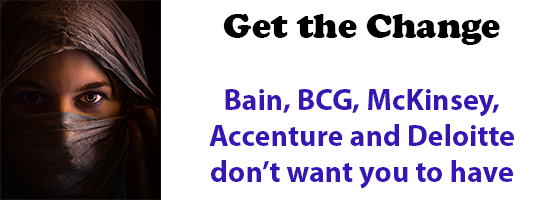
2021 marked the re-birth of my original Blogging Innovation blog as a new blog called Human-Centered Change and Innovation.
Many of you may know that Blogging Innovation grew into the world’s most popular global innovation community before being re-branded as InnovationExcellence.com and being ultimately sold to DisruptorLeague.com.
Thanks to an outpouring of support I’ve ignited the fuse of this new multiple author blog around the topics of human-centered change, innovation, transformation and design.
I feel blessed that the global innovation and change professional communities have responded with a growing roster of contributing authors and more than 17,000 newsletter subscribers.
To celebrate we’ve pulled together the Top 100 Innovation and Transformation Articles of 2022 from our archive of over 1,000 articles on these topics.
We do some other rankings too.
We just published the Top 40 Innovation Bloggers of 2022 and as the volume of this blog has grown we have brought back our monthly article ranking to complement this annual one.
But enough delay, here are the 100 most popular innovation and transformation posts of 2022.
Did your favorite make the cut?
1. A Guide to Organizing Innovation – by Jesse Nieminen
2. The Education Business Model Canvas – by Arlen Meyers, M.D.
3. 50 Cognitive Biases Reference – Free Download – by Braden Kelley
4. Why Innovation Heroes Indicate a Dysfunctional Organization – by Steve Blank
5. The One Movie All Electric Car Designers Should Watch – by Braden Kelley
6. Don’t Forget to Innovate the Customer Experience – by Braden Kelley
7. What Latest Research Reveals About Innovation Management Software – by Jesse Nieminen
8. Is Now the Time to Finally End Our Culture of Disposability? – by Braden Kelley
9. Free Innovation Maturity Assessment – by Braden Kelley
10. Cognitive Bandwidth – Staying Innovative in ‘Interesting’ Times – by Pete Foley
11. Is Digital Different? – by John Bessant
12. Top 40 Innovation Bloggers of 2021 – Curated by Braden Kelley
13. Can We Innovate Like Elon Musk? – by Pete Foley
14. Why Amazon Wants to Sell You Robots – by Shep Hyken
15. Free Human-Centered Change Tools – by Braden Kelley
16. What is Human-Centered Change? – by Braden Kelley
17. Not Invented Here – by John Bessant
18. Top Five Reasons Customers Don’t Return – by Shep Hyken
19. Visual Project Charter™ – 35″ x 56″ (Poster Size) and JPG for Online Whiteboarding – by Braden Kelley
20. Nine Innovation Roles – by Braden Kelley
21. How Consensus Kills Innovation – by Greg Satell
22. Why So Much Innoflation? – by Arlen Meyers, M.D.
23. ACMP Standard for Change Management® Visualization – 35″ x 56″ (Poster Size) – Association of Change Management Professionals – by Braden Kelley
24. 12 Reasons to Write Your Own Letter of Recommendation – by Arlen Meyers, M.D.
25. The Five Keys to Successful Change – by Braden Kelley
26. Innovation Theater – How to Fake It ‘Till You Make It – by Arlen Meyers, M.D.
27. Five Immutable Laws of Change – by Greg Satell
28. How to Free Ourselves of Conspiracy Theories – by Greg Satell
29. An Innovation Action Plan for the New CTO – by Steve Blank
30. How to Write a Failure Resume – by Arlen Meyers, M.D.

31. Entrepreneurs Must Think Like a Change Leader – by Braden Kelley
32. No Regret Decisions: The First Steps of Leading through Hyper-Change – by Phil Buckley
33. Parallels Between the 1920’s and Today Are Frightening – by Greg Satell
34. Technology Not Always the Key to Innovation – by Braden Kelley
35. The Era of Moving Fast and Breaking Things is Over – by Greg Satell
36. A Startup’s Guide to Marketing Communications – by Steve Blank
37. You Must Be Comfortable with Being Uncomfortable – by Janet Sernack
38. Four Key Attributes of Transformational Leaders – by Greg Satell
39. We Were Wrong About What Drove the 21st Century – by Greg Satell
40. Stoking Your Innovation Bonfire – by Braden Kelley
41. Now is the Time to Design Cost Out of Our Products – by Mike Shipulski
42. Why Good Ideas Fail – by Greg Satell
43. Five Myths That Kill Change and Transformation – by Greg Satell
44. 600 Free Innovation, Transformation and Design Quote Slides – Curated by Braden Kelley
45. FutureHacking – by Braden Kelley
46. Innovation Requires Constraints – by Greg Satell
47. The Experiment Canvas™ – 35″ x 56″ (Poster Size) – by Braden Kelley
48. The Pyramid of Results, Motivation and Ability – by Braden Kelley
49. Four Paradigm Shifts Defining Our Next Decade – by Greg Satell
50. Why Most Corporate Mindset Programs Are a Waste of Time – by Alain Thys

51. Impact of Cultural Differences on Innovation – by Jesse Nieminen
52. 600+ Downloadable Quote Posters – Curated by Braden Kelley
53. The Four Secrets of Innovation Implementation – by Shilpi Kumar
54. What Entrepreneurship Education Really Teaches Us – by Arlen Meyers, M.D.
55. Reset and Reconnect in a Chaotic World – by Janet Sernack
56. You Can’t Innovate Without This One Thing – by Robyn Bolton
57. Why Change Must Be Built on Common Ground – by Greg Satell
58. Four Innovation Ecosystem Building Blocks – by Greg Satell
59. Problem Seeking 101 – by Arlen Meyers, M.D.
60. Taking Personal Responsibility – Back to Leadership Basics – by Janet Sernack
61. The Lost Tribe of Medicine – by Arlen Meyers, M.D.
62. Invest Yourself in All That You Do – by Douglas Ferguson
63. Bureaucracy and Politics versus Innovation – by Braden Kelley
64. Dare to Think Differently – by Janet Sernack
65. Bridging the Gap Between Strategy and Reality – by Braden Kelley
66. Innovation vs. Invention vs. Creativity – by Braden Kelley
67. Building a Learn It All Culture – by Braden Kelley
68. Real Change Requires a Majority – by Greg Satell
69. Human-Centered Innovation Toolkit – by Braden Kelley
70. Silicon Valley Has Become a Doomsday Machine – by Greg Satell
71. Three Steps to Digital and AI Transformation – by Arlen Meyers, M.D.
72. We need MD/MBEs not MD/MBAs – by Arlen Meyers, M.D.
73. What You Must Know Before Leading a Design Thinking Workshop – by Douglas Ferguson
74. New Skills Needed for a New Era of Innovation – by Greg Satell
75. The Leader’s Guide to Making Innovation Happen – by Jesse Nieminen
76. Marriott’s Approach to Customer Service – by Shep Hyken
77. Flaws in the Crawl Walk Run Methodology – by Braden Kelley
78. Disrupt Yourself, Your Team and Your Organization – by Janet Sernack
79. Why Stupid Questions Are Important to Innovation – by Greg Satell
80. Breaking the Iceberg of Company Culture – by Douglas Ferguson

81. A Brave Post-Coronavirus New World – by Greg Satell
82. What Can Leaders Do to Have More Innovative Teams? – by Diana Porumboiu
83. Mentors Advise and Sponsors Invest – by Arlen Meyers, M.D.
84. Increasing Organizational Agility – by Braden Kelley
85. Should You Have a Department of Artificial Intelligence? – by Arlen Meyers, M.D.
86. This 9-Box Grid Can Help Grow Your Best Future Talent – by Soren Kaplan
87. Creating Employee Connection Innovations in the HR, People & Culture Space – by Chris Rollins
88. Developing 21st-Century Leader and Team Superpowers – by Janet Sernack
89. Accelerate Your Mission – by Brian Miller
90. How the Customer in 9C Saved Continental Airlines from Bankruptcy – by Howard Tiersky
91. How to Effectively Manage Remotely – by Douglas Ferguson
92. Leading a Culture of Innovation from Any Seat – by Patricia Salamone
93. Bring Newness to Corporate Learning with Gamification – by Janet Sernack
94. Selling to Generation Z – by Shep Hyken
95. Importance of Measuring Your Organization’s Innovation Maturity – by Braden Kelley
96. Innovation Champions and Pilot Partners from Outside In – by Arlen Meyers, M.D.
97. Transformation Insights – by Bruce Fairley
98. Teaching Old Fish New Tricks – by Braden Kelley
99. Innovating Through Adversity and Constraints – by Janet Sernack
100. It is Easier to Change People than to Change People – by Annette Franz
Curious which article just missed the cut? Well, here it is just for fun:
101. Chance to Help Make Futurism and Foresight Accessible – by Braden Kelley
These are the Top 100 innovation and transformation articles of 2022 based on the number of page views. If your favorite Human-Centered Change & Innovation article didn’t make the cut, then send a tweet to @innovate and maybe we’ll consider doing a People’s Choice List for 2022.
If you’re not familiar with Human-Centered Change & Innovation, we publish 1-6 new articles every week focused on human-centered change, innovation, transformation and design insights from our roster of contributing authors and ad hoc submissions from community members. Get the articles right in your Facebook feed or on Twitter or LinkedIn too!
Editor’s Note: Human-Centered Change & Innovation is open to contributions from any and all the innovation & transformation professionals out there (practitioners, professors, researchers, consultants, authors, etc.) who have a valuable insight to share with everyone for the greater good. If you’d like to contribute, contact us.
 Sign up here to get Human-Centered Change & Innovation Weekly delivered to your inbox every week.
Sign up here to get Human-Centered Change & Innovation Weekly delivered to your inbox every week.

![]() Sign up here to get Human-Centered Change & Innovation Weekly delivered to your inbox every week.
Sign up here to get Human-Centered Change & Innovation Weekly delivered to your inbox every week. Drum roll please…
Drum roll please…








